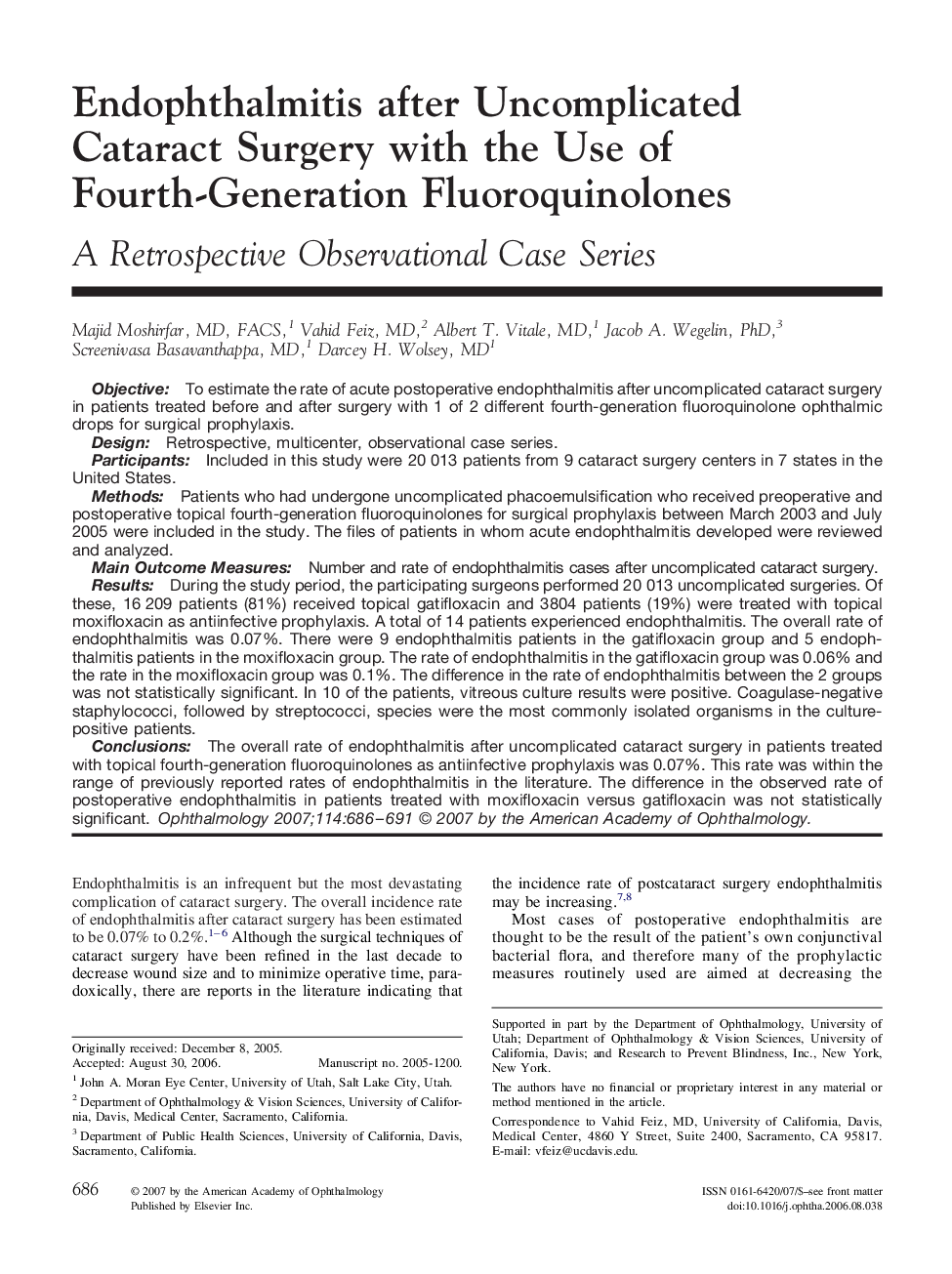| کد مقاله | کد نشریه | سال انتشار | مقاله انگلیسی | نسخه تمام متن |
|---|---|---|---|---|
| 4030336 | 1262525 | 2007 | 6 صفحه PDF | دانلود رایگان |

ObjectiveTo estimate the rate of acute postoperative endophthalmitis after uncomplicated cataract surgery in patients treated before and after surgery with 1 of 2 different fourth-generation fluoroquinolone ophthalmic drops for surgical prophylaxis.DesignRetrospective, multicenter, observational case series.ParticipantsIncluded in this study were 20 013 patients from 9 cataract surgery centers in 7 states in the United States.MethodsPatients who had undergone uncomplicated phacoemulsification who received preoperative and postoperative topical fourth-generation fluoroquinolones for surgical prophylaxis between March 2003 and July 2005 were included in the study. The files of patients in whom acute endophthalmitis developed were reviewed and analyzed.Main Outcome MeasuresNumber and rate of endophthalmitis cases after uncomplicated cataract surgery.ResultsDuring the study period, the participating surgeons performed 20 013 uncomplicated surgeries. Of these, 16 209 patients (81%) received topical gatifloxacin and 3804 patients (19%) were treated with topical moxifloxacin as antiinfective prophylaxis. A total of 14 patients experienced endophthalmitis. The overall rate of endophthalmitis was 0.07%. There were 9 endophthalmitis patients in the gatifloxacin group and 5 endophthalmitis patients in the moxifloxacin group. The rate of endophthalmitis in the gatifloxacin group was 0.06% and the rate in the moxifloxacin group was 0.1%. The difference in the rate of endophthalmitis between the 2 groups was not statistically significant. In 10 of the patients, vitreous culture results were positive. Coagulase-negative staphylococci, followed by streptococci, species were the most commonly isolated organisms in the culture-positive patients.ConclusionsThe overall rate of endophthalmitis after uncomplicated cataract surgery in patients treated with topical fourth-generation fluoroquinolones as antiinfective prophylaxis was 0.07%. This rate was within the range of previously reported rates of endophthalmitis in the literature. The difference in the observed rate of postoperative endophthalmitis in patients treated with moxifloxacin versus gatifloxacin was not statistically significant.
Journal: Ophthalmology - Volume 114, Issue 4, April 2007, Pages 686–691